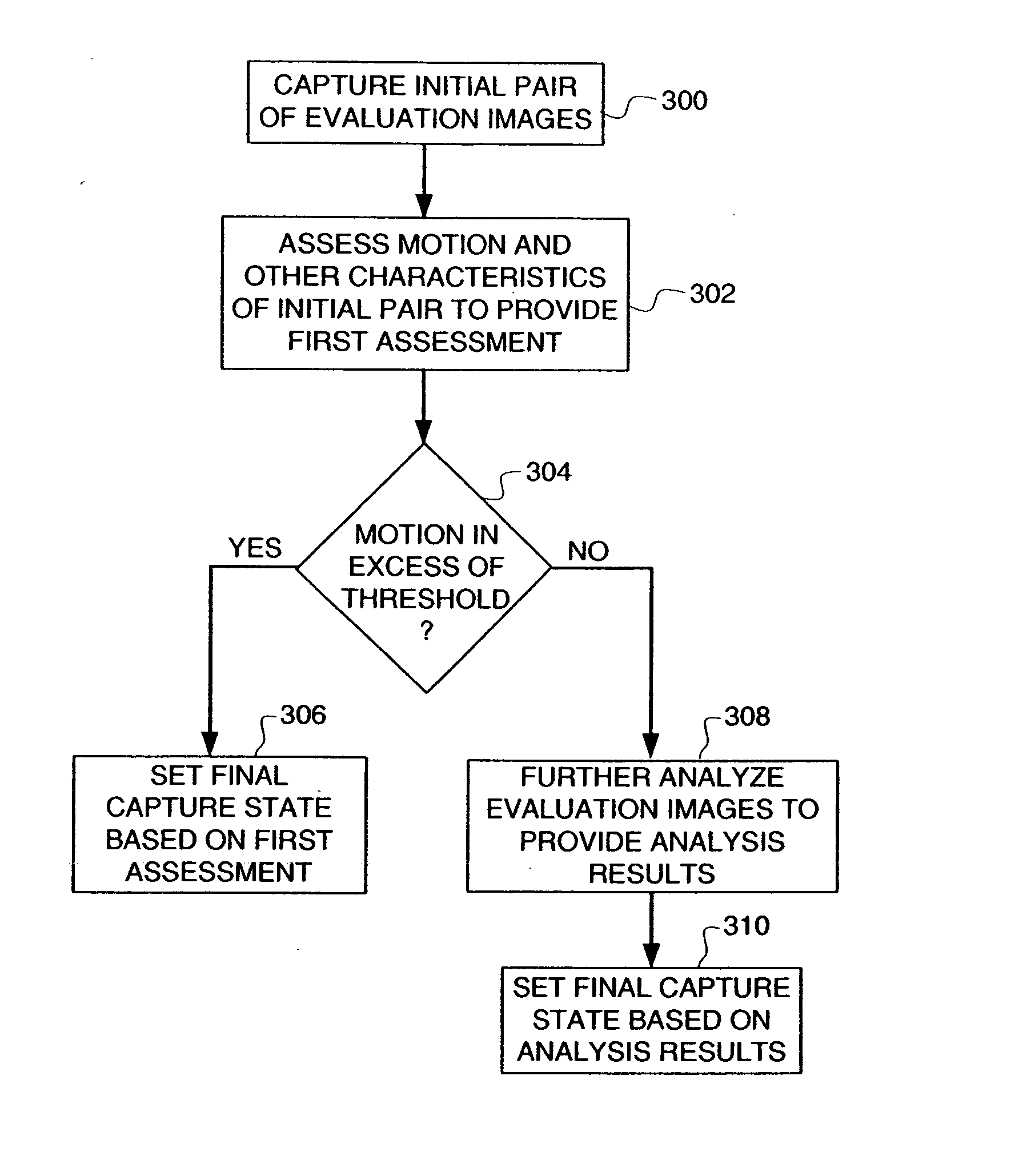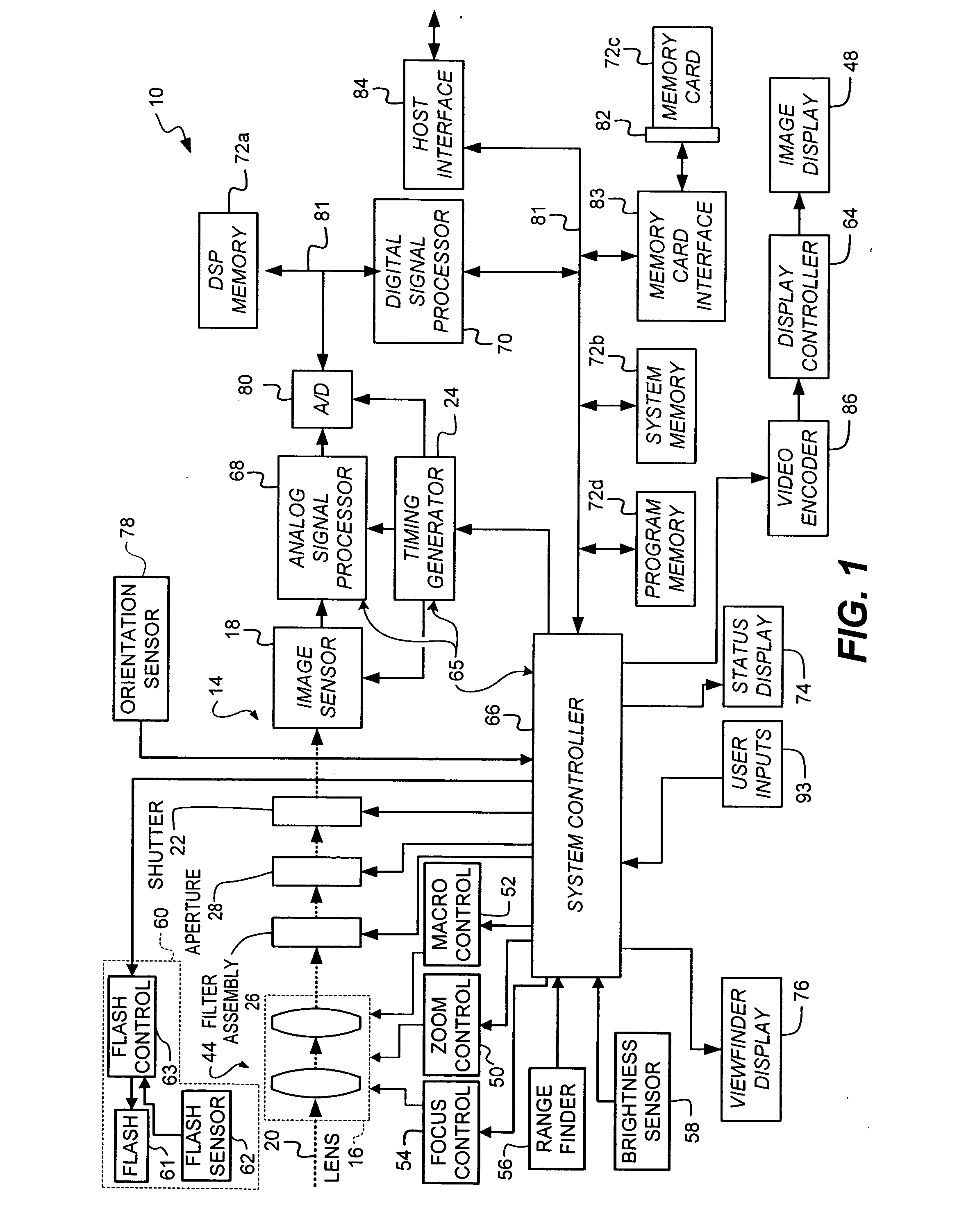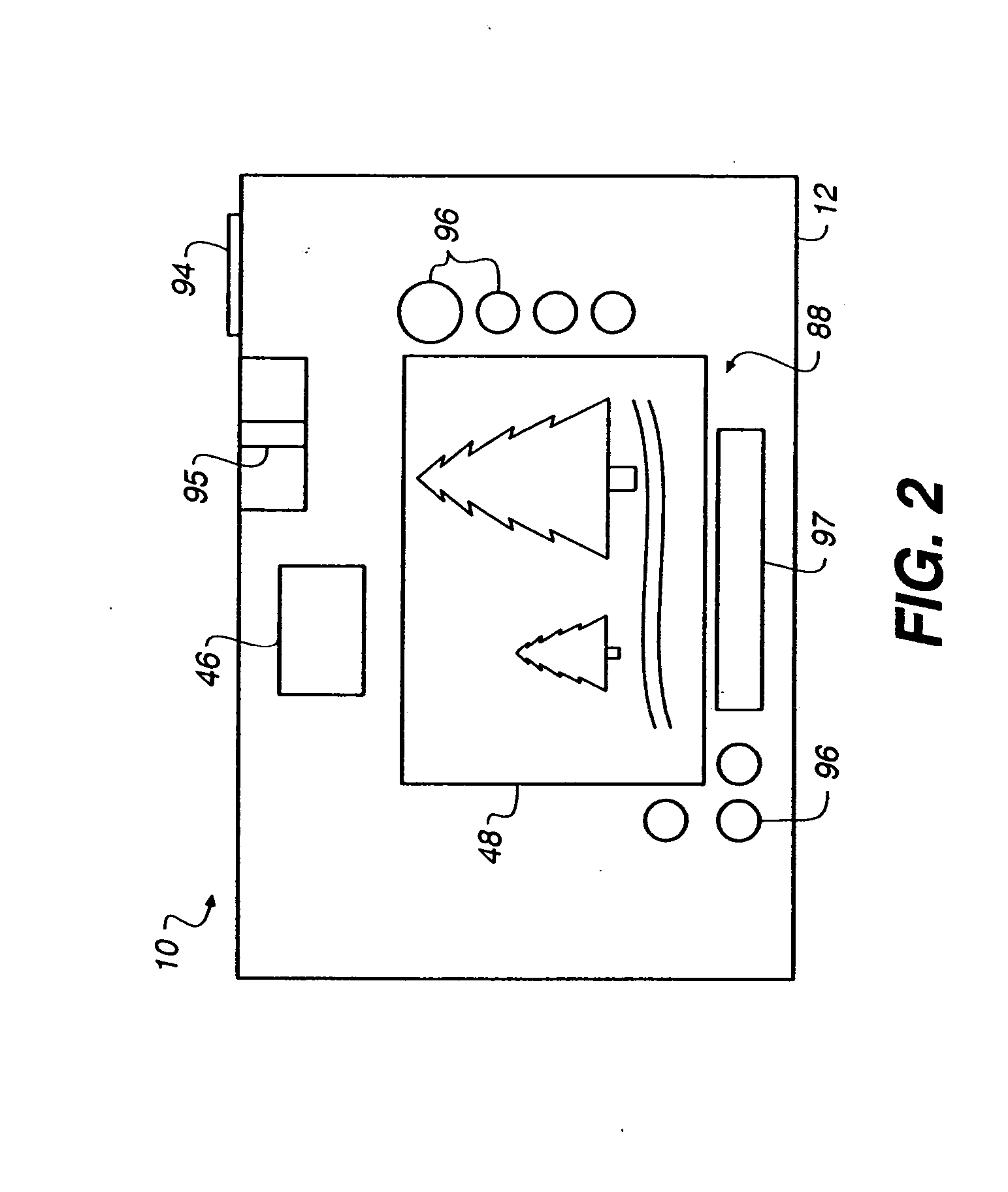Varying camera self-determination based on subject motion
a camera and subject technology, applied in the field of photography and photographic equipment and methods, can solve the problems of limited intelligence in these systems, limited use of scene modes in several ways, and scene modes tend to oversimplify the possible kinds of scenes being captured
- Summary
- Abstract
- Description
- Claims
- Application Information
AI Technical Summary
Benefits of technology
Problems solved by technology
Method used
Image
Examples
Embodiment Construction
[0033] The following discussion refers to both still cameras and video cameras. It will be understood that the respective terms are inclusive of both dedicated still and video cameras and of combination still / video cameras, as used for the respective still or video capture function.
[0034] The term “capture state” is used herein to refer collectively to a plurality of camera settings that are or can be used together during a particular picture taking event to moderate how a light image is captured. Each setting is variable and affects one or more characteristics of an archival image captured and stored by the camera. Examples of settings include: lens aperture, lens focal length, shutter speed, flash condition, focus parameters, exposure parameters, white balance, image resolution, sensor gain, color saturation, sharpening filter parameters, and the like. Settings available with an individual camera vary depending upon camera characteristics. A capture state may or may not fully det...
PUM
 Login to View More
Login to View More Abstract
Description
Claims
Application Information
 Login to View More
Login to View More - R&D
- Intellectual Property
- Life Sciences
- Materials
- Tech Scout
- Unparalleled Data Quality
- Higher Quality Content
- 60% Fewer Hallucinations
Browse by: Latest US Patents, China's latest patents, Technical Efficacy Thesaurus, Application Domain, Technology Topic, Popular Technical Reports.
© 2025 PatSnap. All rights reserved.Legal|Privacy policy|Modern Slavery Act Transparency Statement|Sitemap|About US| Contact US: help@patsnap.com



